Review of Otogi Zoshi: Vol. 3 Burning The Past
Introduction
Manga Entertainment`s New Year releases continue, following the She, The Ultimate Weapon OVA with the release of the third volume of Otogi Zoshi. The first two volumes were single disc releases, packing copious extra features in with the episodes, occasionally to the detriment of the quality of the transfer. For this third volume, the run time of the extras is such that they require a disc of their own. Will the extra space freed up for the four episodes make any difference to the transfer?
Otogi Zoshi is a 26 episode series that has an interesting premise. It`s a story told over a thousand years with the final half set in the present day, while the first thirteen episodes are set back in the year 972 of the Heian period of Japanese history (Don`t worry if the history eludes you, as this is one anime release with copious and relevant extra features). Coming from the powerhouse behind Ghost In The Shell Stand Alone Complex that is Studio I.G., this is a tantalising title. The story begins in a dark period of Japan`s history, the country is afflicted by disease and famine, and the cities and countryside may as well be separate states, torn apart by inter-clan feuds. There is hope though, in magical artefacts called the Magatama beads, whose power can heal the country and salve the woes of the people. It is by an Imperial decree that the Minamoto clan is responsible for their safe retrieval. Circumstances force young Hikaru no Minamoto to disguise herself as her brother Raiko and take on his mission. Volume 3 contains four episodes and sees the band of heroes having to thwart an attack on the capital, while sinister forces plot to use the Magatama beads for ill.
10. Shuten
Shuten Doji`s attack on the capital progresses, with all the factions satisfied that their plans are about to come into fruition. Not all these plans can prevail however, and betrayal is the order of the day. Meanwhile Hikaru and her friends race to save the city and retrieve the final Magatama from Shuten Doji.
11. Conflict
Urabe has stolen the Magatama of Fire, but Hikaru can`t believe that she has betrayed the group. With all five beads in his possession, Abe no Seimei has the power to reshape the world to his design, but at the last minute, Urabe questions her master. Finally Hikaru learns the depth of Seimei`s machinations, and realises she must stop him from creating the mystical pentacle. But time has run out.
12. Seimei
The city is in flames, and Seimei has put his plan into motion. Hikaru and the others have to stop him, but find the way barred by his soldiers, who have been told that they are traitors and must be dealt with accordingly. It`s time for those loyal to Lord Raiko to make the ultimate sacrifice in order to ensure the success of the mission.
13. Hikaru
Raiko and Seimei face off as the ritual of the Magatama is about to finish, yet neither is exactly who they appear to be. Seimei has been counting on this confrontation, indeed it is essential to his plan, and Hikaru has just walked into a trap.
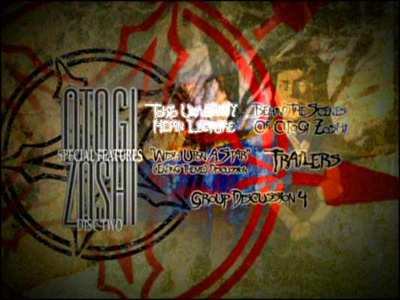
Video
It appears that the extra space assigned to the episodes hasn`t been utilised, with just 6 Gig of the full capacity of the dual layer disc filled. Otogi Zoshi is presented in a 4:3 aspect ratio and while compression artefacts are scarce, the transfer is clear, sharp and colourful. There is still moiré and shimmer over fine detail though. Also, this disc also shows signs that the journey from NTSC to PAL hasn`t been incident free, and there is some distinct jerkiness in the pans. These problems do seem to diminish as the episodes progress though. The animation, as you would expect from Production I.G is something quite special. It is very stylised, the character designs are minimalist, but never to the detriment of the animation, and the look is something akin to an animated painting. Indeed, it often seems like you could pause any frame and hang it on the wall as art. It`s all very effective.
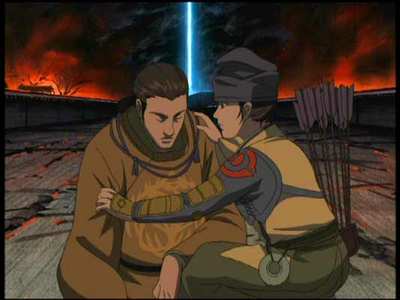
Audio
You can choose between DD 2.0, DD 5.1 and DTS soundtracks in both English and Japanese, with optional translated English subtitles in a nice white on black font. There`s one slight spelling change/error however, with Abe no Seimei now written as Abeno Seimei. I chose the Japanese 5.1 track and it`s a fairly decent surround track, with perhaps a slightly aggressive use of the rears. The English surround track is a tad more subdued by comparison, and as usual with recent anime releases, the dub is professional and easy to listen to. The opening theme takes a little getting used to, but the closing theme is another excellent piece of music to accompany a Japanese animation. The final episode has a nice piece of music called `Little Wing` also by Chieko Kawabe worth listening out for. It`s very Beatles-esque.
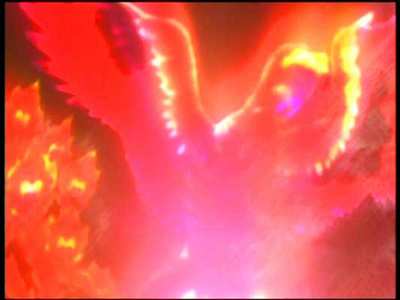
Features
This time around, we get two discs with animated menus. Disc one has the episodes and offers a play all option. If you choose the latter you`ll only have to face the logos once, but choose the episodes separately and you`ll have to sit through 11 extra seconds of CGI before each episode.
The second disc contains the extras, and naturally Manga put their trailers on this disc, this time for Noein, Karas, Tactics, Naruto, Ghost In The Shell: 2nd Gig and Robotech.
You`ll find the final Tokyo University Heian Lecture here and it lasts 21 minutes. Dr Kazato Hongo, Professor of History at Tokyo University was the historical consultant on the show, and he uses this opportunity to talk a little about the Heian period. This is with reference to how accurate the show is to what is known, and he examines each episode one by one, pointing out items of historical significance, and where dramatic licence was taken. This time around he relates the fictional characters to their historical counterparts, and discusses the real life Rashomon that serves as setting for the arc`s finale.
"Wish Upon A Star" Closing Theme Discussion is an eight-minute interview with vocalist Chieko Kawabe and series director Mizuho Nishikubo. They talk about the show`s theme and how it complements the story.
Behind The Scenes Of Otogi Zoshi lasts 7 minutes and takes us into the studios of Production I.G, where we can get plenty of soundbites from the production staff of Otogi Zoshi. There`s a fair amount of discussion about the Tokyo arc, although nothing that can be considered a spoiler.
The final Group Discussion segment for the Heian Arc lasts 27 minutes. In it, Director Mizuho Nishikubo, Character Designer Shou Tajima, Animation Director Kazuchika Kise, and Episode Director/Screenplay Yoshiki Sakurai gather for an informal chat at a bar. This time around they talk about completing the Heian arc, and deciding what to do next, the meaning of `Otogi Zoshi`, the upcoming Tokyo arc, and they take a look at the character of Abe no Seimei. Once again they end by answering a few viewer letters.
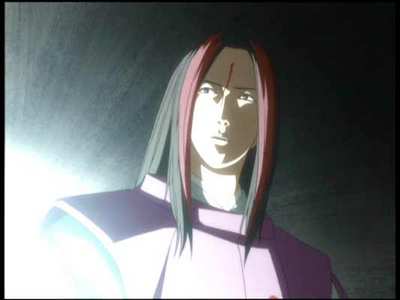
Conclusion
Otogi Zoshi has turned out to be a slow burner of a series, one that has really grown on me over the last thirteen episodes. What started off as a considered, slow paced, somewhat mundane story with unremarkable characters has deepened and become more compelling, until it reaches a veritable crescendo at the conclusion of this Heian Arc, the first half of the series. The gradual character development really told in these final episodes, as I found myself caring about what happened to Hikaru and her companions.
The story itself took on an added dimension, from merely the quest from the Magatama beads in the earlier episodes, to a multi-layered character piece, full of politics, betrayals, and back stabbing machinations. It becomes clear who is behind all these manoeuvrings, and while his identity is somewhat predictable, the reasons behind it all are surprising, and the climax of this story is unexpected and emotional. The initial idea was to have two seasons of 26 episodes each for the arcs, but given the rather simple nature of the earlier episodes, cutting the Heian arc to 13 episodes means that character development and overall narrative take centre stage, and condensing the story down means it makes a greater emotional impact.
You notice that I am being deliberately vague about the story, so as not to spoil the fun, but given that this is the climax, you can expect some splendid action sequences and some glorious animation. I was at the edge of my seat as the story reached its conclusion, and Otogi Zoshi maintains its reputation for graphical beauty.
I wouldn`t have said this after watching the first volume, but sticking with Otogi Zoshi has really paid off. This is a series that is best appreciated in its entirety, rather than piecemeal. The characters have really grown over the last thirteen episodes, and the story has become much more than the hackneyed mundanity I initially assumed it to be. It`s a thoughtful considered anime, accomplished with breathtaking visuals that deserves to be seen. After watching the Heian arc grow and flourish, I`m on tenterhooks to see what will happen in the Tokyo arc. Volume 4 can`t come soon enough for this reviewer.
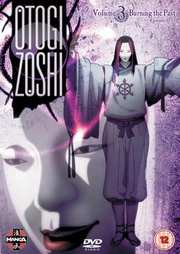




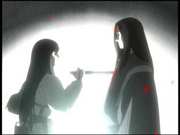
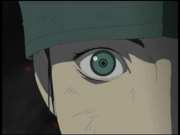
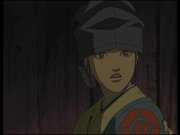
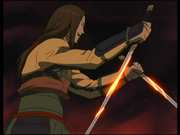
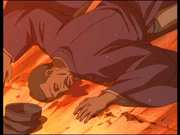
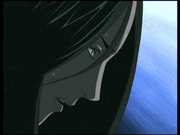
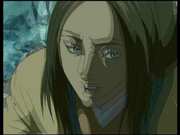
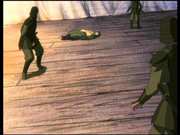
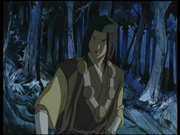
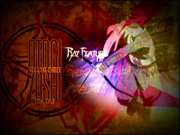
































Your Opinions and Comments
Be the first to post a comment!